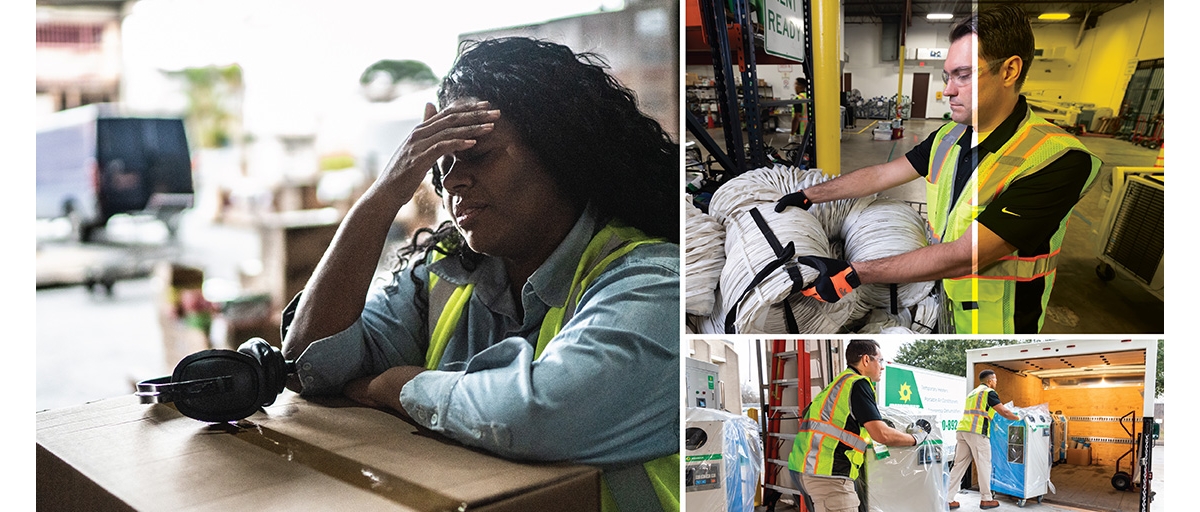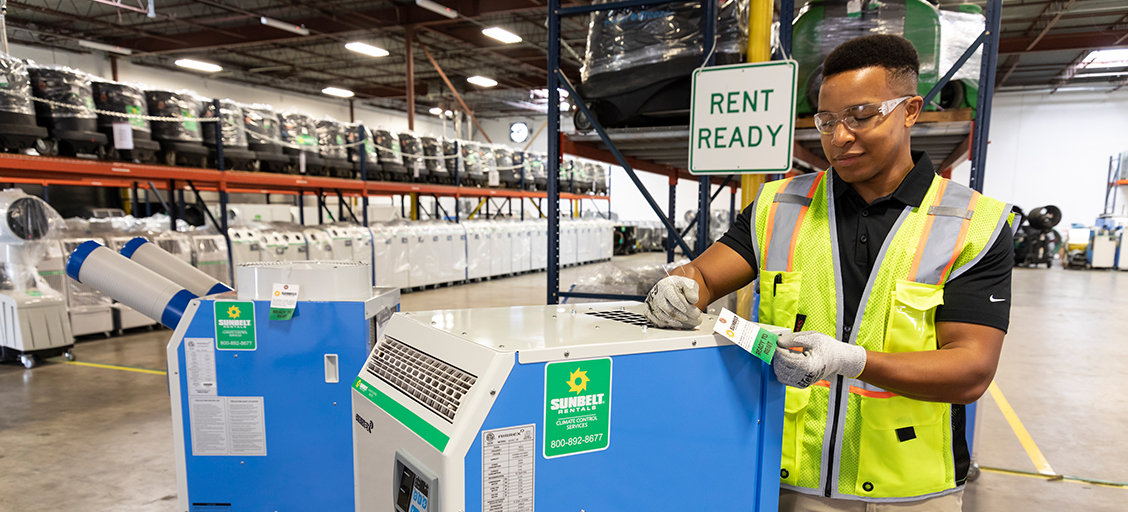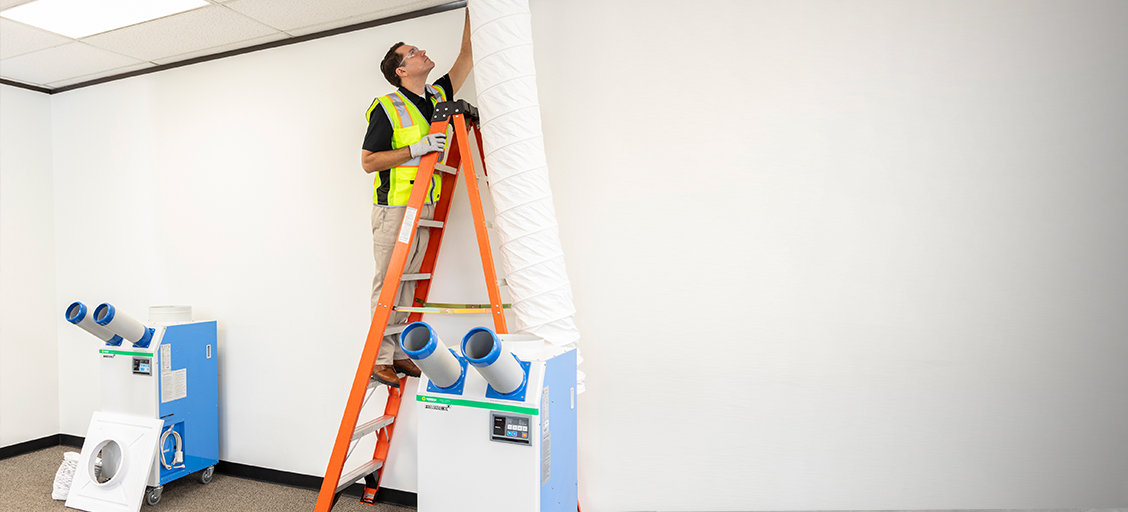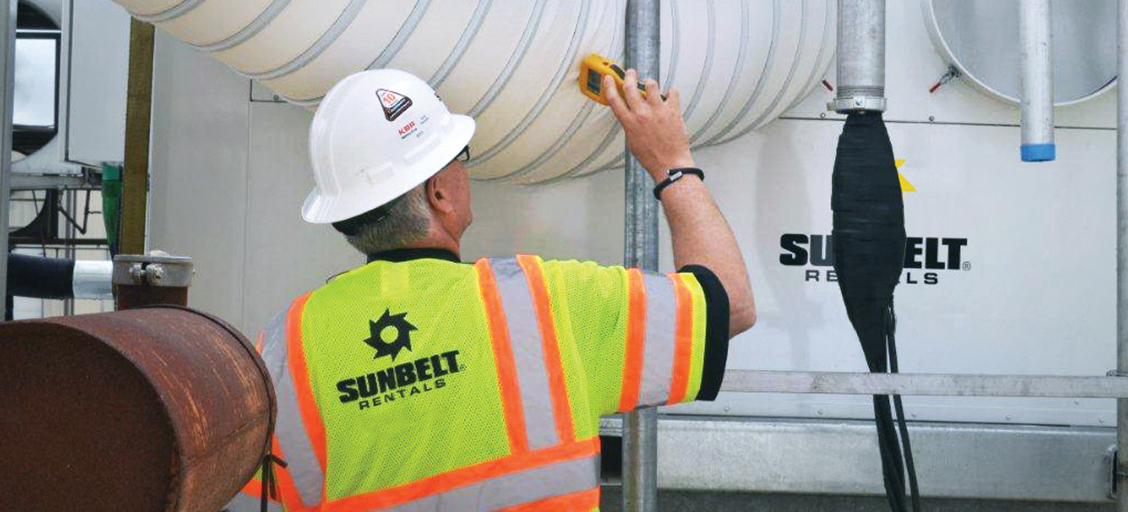-
Equipment and Tools
-
Aerial Work Platforms, Scaffolding And Ladders
- See all
- Atrium Lift
- Cranes / Boom Trucks
- Electric Scissorlifts
- Low-Level Access
-
Manlift Articulating
- See all
- Manlift Articulating 120' - 135' Combustion
- Manlift Articulating 30' - 39' Combustion
- Manlift Articulating 30' - 39' Electric
- Manlift Articulating 34' - 39' Towable
- Manlift Articulating 40' - 49' Combustion
- Manlift Articulating 40' - 49' Electric
- Manlift Articulating 50' - 59' Towable
- Manlift Articulating 60' - 69' Combustion
- Manlift Articulating 60' - 69' Electric
- Manlift Articulating 80' - 89' Combustion
- Manlift Straight Boom
- Mast Boom Lift
- One Man Drivable
- One Man Push Arounds
- Power Accessories
- Rt Scissor
- Scaffolding And Ladders
- Straddle Adapter
-
Air Compressors And Air Tools
- See all
- Air Compressor Aftercoolers / Filters / Separators / Dryers
-
Air Compressors
- See all
- Air Compressors 1000cfm - 1300cfm
- Air Compressors 1000cfm - 1300cfm Instrument Quality
- Air Compressors 1500cfm - 1800cfm Instrument Quality
- Air Compressors 300cfm - 400cfm
- Air Compressors 300cfm - 400cfm Instrument Quality
- Air Compressors 5cfm - 85cfm
- Air Compressors 600cfm - 900cfm
- Air Compressors 600cfm - 900cfm Instrument Quality
- Air Compressors 90cfm - 250cfm
- Air Compressors Electric 100cfm - 1000cfm
- Air Compressor Accessories
- Air Impact Wrenches
- Air Nailers & Staplers
- Air Tools - Contractor
- Air Tools - Demolition
- Air Tools - Industrial
- Compaction
-
Concrete And Masonry
- See all
- Battery Powered Saw
- Concrete - Finishing Equipment
- Concrete - Surface Preparation Equipment
-
Concrete / Masonry - Cutting & Drilling Equipment
- See all
- Concrete& Asphalt Floor Saws - Push Type
- Concrete And Masonry Blades
- Concrete Dowel Drills
- Core Drill Bits
- Crack Chasers
- Cutoff Saws Hand Held/ Gas/ Air/ Electric/ Hydraulic
- Diamond Chain Saws
- Diamond Core Drills
- Early Entry Concrete Saws
- Masonry Saws
- Street Saws Self-Propelled
- Tile Saws
- Concrete Water Accessories
- Concrete / Masonry - Mixing & Placing Equipment
-
Cooling, Heating, Drying And Indoor Air Quality
- See all
- Air Management - Accessories
- Air Management - Air Scrubbers
- Air Management - Dehumidifier
- Air Management - Fans & Blowers
- Boilers
- Cooling - Air Conditioning
- Cooling - Air Handlers
- Cooling - Chillers
- Cooling - Cooling Tower
- Cooling - Spot Cooler
- Fans / Blowers / Ventilators
- Heating - Accessories
-
Heating - Direct Fired
- See all
- 201k-300k Btu Kerosene Heater Dir
- 20k-80k Btu Kerosene Heater Dir
- 301k-400k Btu Kerosene Heater Dir
- 301k-400k Btu Lp/Ng Heater Dir
- 40k-70k Btu Kerosene Heater Dir
- 81k-200k Btu Kerosene Heater Dir
- Propane Convection& Radiant Heaters 22k - 200k Bt
- Propane/Natural Gas Direct-Fired Heaters 30k-2.5m
- Heating - Electric
- Heating - Flameless
- Heating - Hydronic / Ground
-
Heating - Indirect Fired
- See all
- 1000k Btu And Up Kerosene Heater
- 1000k Btu And Up Lp/Ng Heater
- 1mil - 5mil Btu Diesel Heater
- 201k-300k Btu Kerosene Heater
- 301k-400k Btu Kerosene Heater
- 301k-400k Btu Lp/Ng Heater
- 401k-500k Btu Kerosene Heater
- 401k-500k Btu Lp/Ng Heater
- 501k-999k Btu Diesel Heater
- 501k-999k Btu Kerosene Heater
- 501k-999k Btu Lp/Ng Heater
- 81k-200k Btu Kerosene Heater
- Heating - Steam / Hot Water
-
Earth Moving
- See all
- Backhoe Loaders
- Dozers & Crawler Loaders
- Excavators
- Hydraulic Breakers & Demolition Attachments
- Mini Excavators
- Motor Graders
- Rental Vehicles
-
Skidsteer Loaders
- See all
- Compact Skidsteer Loader
- Skidsteer Loader 999lb& Under
- Skidsteer Loader 1000-1499lb
- Skidsteer Loader 1100-1500lb Track
- Skidsteer Loader 1500-2000lb
- Skidsteer Loader 1500-2100lb Track
- Skidsteer Loader 2000-2800lb
- Skidsteer Loader 2100-2800lb Track
- Skidsteer Loader 2800-3200lb Track
- Ride On Skidsteer Attachments
- Skidsteer Attachments
- Tractors & Landscape Loaders
- Trenchers
- Wheel Loaders
- Floor Care
-
Forklifts
- See all
- Forklift Accessories
- Forklifts - Industrial
- Forklifts - Straight Mast Rt
- Forklifts - Telehandler
-
Material Handling Equipment
- See all
- Aluminum Dockplates
- Aluminum Loading Ramps
- Appliance Trucks
- Banding Kits
- Cricket Pipe Dolly
- Dry Wall Lift& Carts
- Duct Jacks/ Genie Material Lifts
- Glass Manipulators
- Grasshopper Pipe Dolly
- Hand Trucks
- Hilman Rollers/ Roller Skid Systems
- Hydraulic Rol-A-Lift
- Johnson Bar/ Pry Dollies
- Load Binders
- Pallet Pullers
- Pallet Trucks
- Platform Trucks
- Roust-A-Bout Portable Lift
- Stairclimbing Motorized Hand Trucks
- Warehouse Dolly
-
General Construction Tools
- See all
- Abrasive Blasting Equipment
- Batteries And Chargers
- Battery Powered Air Compressor
-
Battery Powered Tools
- See all
- Angle Grinders - Battery
- Circular Saws - Battery
- Compound Miter Saws - Battery
- Drywall Screwdrivers - Battery
- Hand-Held Band Saw - Battery
- Hand-Held Drills - Battery
- Impact Wrenches - Battery
- Miscellaneous - Battery
- Nailers - Battery
- Orbital Sanders - Battery
- Portable Table Saw - Battery
- Reciprocating Saws - Battery
- Rotary And Demolition Hammers - Battery
- Battery Powered Vacuum
- Chain Hoists & Air Winches
- Conveyors
- Drain & Sewer Cleaning & Inspections
-
Electric Tools
- See all
- Angle Grinders
- Belt Sanders
- Circular Saws
- Compound Miter Saws
- Die Grinders
- Drywall Screwdrivers
- Hand-Held Band Saw
- Hand-Held Drills
- Heat Gun
- Impact Wrenches
- Jigsaws
- Magnetic Drills
- Orbital Sanders
- Planers
- Portable Table Saw
- Reciprocating Saws
- Rotary And Demolition Hammer Accessories
- Rotary And Demolition Hammers
- Routers
- Shears& Nibblers
- Stationary Chop Saw
- Hydraulic / Electric Torque Wrenches / Enerpac
- Hydraulic Cylinders / Enerpac Jacking Systems
- Hydraulic Pumps / Enerpac
- Hydraulic Tools / Enerpac
- Industrial Vehicles
- Jacks - Bottle / Screw / Toe Jack
- Laser & Optical Levels
- Lighting Equipment
-
Mechanical & Electrical Contractor Trade Tools
- See all
- Cable Feeder
- Cable Reel Roller - Electric
- Cable Reel Stands/ Spindles
- Chain Vice/ Tri-Stand/ Pipe Stands
- Crimping Tools - Electric
- Crimping Tools - Manual
- Electric Cable Pullers& Sheaves
- Electric Conduit Benders
- Electric Pvc Heaters/ Pvc Benders
- Geared Threader/ Hog Head
- Hole Cutting Tool
- Hydraulic Conduit Benders
- Hydraulic Punch Drivers/ Knockout Sets
- Manual Pipe Tools& Accessories
- Mechanical Conduit Benders
- Pipe Threaders - Electric
- Power Fish System
- Power Pipe Cutters
- Victaulic Roll Groovers
- Wire Carts/ Dispensers
- Miscellaneous
- Paint Sprayers
- Pressure Washers
- Siding Brake
- Site Services
- Storage Containers / Jobsite Storage
- Traffic Safety Equipment
- Trailers
- Welding & Plasma Cutting Equipment
- Generators And Accessories
- Ground Protection
-
Lawn, Landscape, And Tree
- See all
- Battery Powered Lawn & Landscape
-
Lawn & Landscape
- See all
- Backpack Sprayer
- Bed Edger/ Trencher
- Chain Saws
- Garden Tillers
- Gas-Powered Drill
- Hand Tools
- Hand-Held Metal Detector
- Hedge Trimmers
- Hydroseeder
- Lawn Aerators
- Lawn Dethatchers
- Lawn Mowers& Brush Cutters
- Lawn Overseeder
- Lawn Spreader& Roller
- Lawn Vacuum
- Leaf Blowers/ Mulchers
- Log Splitter
- Post Driver
- Post Hole Augers
- Sod Cutters
- Straw Blowers
- Trimmers& Pruners
- Wheelbarrows
- Stump Grinders
- Wood & Brush Chippers
- Load Banks
- Portable Ice Rinks And Pathways
- Pumps
- Refrigeration
- Temporary Containment Walls
- Temporary Fencing
- Temporary Structures
- Trench And Shoring Equipment
-
Aerial Work Platforms, Scaffolding And Ladders
-
-
Industry Solutions
Agriculture Equipment Amusement Theme Parks Automotive Equipment Aviation Equipment Civil Commercial Construction Equipment Educational Facility Equipment Emergency Restoration and Response Entertainment Venue EquipmentEvent Rentals Film & TV Production Golf Course Management Equipment Government Services Healthcare Hospitality Equipment Industrial Manufacturing Equipment Marine EquipmentMining Equipment Oil Gas Equipment Real Estate and Property Maintenance Retail Maintenance Equipment Stadium Maintenance & Cleaning Equipment Utility Services
-
Industry Solutions

How to Choose Portable Cooling Solutions for Warehouses
In the fast-paced world of warehousing, unexpected HVAC repairs can potentially disrupt operations. Heat can endanger workers and slow productivity, but portable air-conditioning is an effective solution to keep facilities functioning and comfortable for workers.
Extreme weather can also cause unexpected disruptions, from a powerful tropical storm that leaves damage in its wake to a lingering heat wave that stresses the electrical grid.
Whether it’s a temporary, emergency, or long-term need, Sunbelt Rentals has the expertise to recommend the most appropriate portable cooling system, including remote monitoring tools to ensure temperatures stay at target levels.

What Are the Different Types of Portable Cooling Equipment?
There Are Three Main Categories of Portable Cooling Equipment.
- Air-cooled: Portable air conditioners that work by pumping in cool air and exhausting hot air out through ductwork. Air-cooled portables are most often the system of choice for server rooms, data centers, and a host of other applications. This is because they can be installed almost anywhere, usually in minutes.
- Water-cooled: Portable air conditioners that connect to an external water source. They are efficient to operate but are best suited for use in facilities with central cooling towers or chiller systems or in regions where the municipal water supply is plentiful and economical. Water-cooled systems need no exhaust ducts, so they are often specified when there is no convenient way to exhaust hot air out of the room, such as in restaurants.
- Evaporative coolers: These use an internal or external water source to provide cooling and a fan to push the air across the space. Though their performance is not comparable to portable air conditioners, evaporative coolers deserve a mention as a simple, economical cooling option, especially for areas where budget or power supply is limited. They should be positioned in an area where large amounts of outdoor air can be drawn in — for example, near a loading dock door in a warehouse or manufacturing area.

How to Take the Guesswork Out of Portable Cooling System Sizing
If you guess low, the unit will not be able to keep up with demand. If you guess high, the unit will cycle on and off frequently, resulting in inefficient performance.
A good starting point is to plan on 3.413 BTU per watt when calculating equipment size — a “typical” space with only lighting loads. That translates to around a ton of air-conditioning for a 400- to 600-square-foot room with an 8-foot ceiling.
Consider These Additional Factors When Sizing Your Portable Cooling System.
- Does the room have windows or other openings, and what is the exposure?
- How much insulation is used in the room?
- What kind of equipment is in the room, and how much wattage does it consume?
- What is the occupant level and activity within the space?
- How much cooling is already coming in via a central air handling system or other source?
Pro tip: Don’t make direct sizing comparisons between portable cooling and residential mini-split units. A 3-ton portable unit is not interchangeable with a 3-ton mini-split. These two system types are tested and rated differently, which can be a source of confusion. You will need more capacity when selecting a portable unit.
After installation, if sizing turns out to be less than perfect, a rented unit can be readily swapped out with a larger or smaller cooling system to ensure optimum cooling performance. A permanently installed air-conditioning system that is over- or undersized will be a much bigger and costlier problem.
While this article focuses on portable air conditioners, Sunbelt Rentals also provides turnkey, customized large area cooling solutions for entire facilities. Explore our comprehensive offering of large air conditioners, chillers and air handlers designed to cool large areas or the full warehouse.
Power Supply Considerations for Portable Air Conditioners
Every model of portable air conditioner is designed for use with a particular type of electric circuitry. After you have correctly sized the equipment and determined the required tonnage, the available power supply might dictate your final equipment selection.
Fortunately, with recent technological advances, the choices are better than they were just a few years ago. There are now portables on the market that will run on convenient 460V 3-phase power and deliver an impressive 5 tons of cooling or more — allowing a single unit to do the job where two or three were previously needed.
Sometimes, however, more is better. With expansive spaces such as warehouses, multiple smaller units might be a better choice than a single large machine, because you will have a critical backup in the unlikely event of equipment failure.

Location Considerations for Portable Air Conditioners
Will the unit be located inside or outside the space to be cooled? This will affect ducting and return air considerations.
- Inside: If the portable unit is inside a room, decide whether to use one or two ducts. For many applications, such as buildings where a central air-conditioning system runs all the time, it is advantageous to use a single duct coming off the top of the unit to dissipate hot air out of the space. As you direct hot air out of the room, the air has to be replenished. The room will receive additional cooling, because the unit will be pulling at negative pressure. That is why you must consider the presence of other cooling sources when sizing a portable air conditioner.
- Outside: If the portable cooling unit must be located outside the room due to floor space limitations, you will need to find a way to get the return and cold air supply in. This might involve cutting openings in the drywall to insert the ductwork. Alternative solutions can be found for temporary portable installations.
- Spot cooling: If the portable unit is inside the space and a spot cooling effect is desired, you might want to select a model equipped with cold air nozzles (sometimes called “snorkel packs”) that allow you to direct the air at hot spots within the room. If you are using a portable cooler with a grill-front design, there are kits available to retrofit most units with nozzles.
- Small rooms within a large facility: A portable unit will often be used to cool an office, a server room, or other small spaces within a warehouse. If the warehouse is a large facility with high ceilings, the hot air can usually be discharged up toward the warehouse ceiling with minimal effect on the rest of the building.
Pro tip: Consider using flexible ducting to deliver controlled cooling. For example, use two 6-inch-diameter nozzles with the first duct going to a diffuser to drop cool air down to one side of the space while a second duct serves the other side.
Managing Cooling Condensate Water
You will need to determine how to dispose of condensate water created by the cooling process.
- Tank/bucket: If you plan to collect condensate water in the standard condensate tank or bucket that comes with the portable cooler, the container simply needs to be emptied when full.
- Condensate line: In server rooms and other spaces where moisture is a hazard, use a condensate pump and run a condensate line out of the room to an external drain like a janitor’s closet, down a bathroom floor drain, or out a window.

What to Consider When Choosing Portable Cooling for Emergency Backup
Power outages caused by extreme weather are on the rise. The second decade of this century saw a 78% increase in average annual weather-related power outages, compared to 2000–2010. Severe weather such as high winds, rain and thunderstorms, tropical storms, hurricanes, extreme heat, and wildfires accounted for three-quarters of all power outages that happened in 2011–2021.
Warehouse Facility Managers Would Be Wise to Plan Ahead for Emergency Backup Portable Cooling. Here Are the Most Important Steps to Review with Your Supplier.
- Backup generator: Ensure there’s a backup generator to provide sufficient power for portable cooling.
- Installation locations: Identify specific areas to be cooled and how the portable coolers will be deployed to those locations.
- Threat assessment: Know all threats. Beyond power outages, what else could trigger a need for emergency cooling? Things such as HVAC equipment breakdowns and fallen tree limbs should be on your list.
- Electrical outlet suitability: Are there accessible power outlets with the required voltage and phase? If not, what kind of electrical cables, extension cords, or other accessories will you need?
- Emergency cooling plan: Create a written emergency cooling plan that includes areas to be cooled and an inventory of the needed portable units and accessories, as well as emergency contact information for the portable air-conditioning supplier.
Pro tip: Whenever possible, specify equipment delivery before a hurricane or heat wave. Ordering ahead is the only way to ensure your facility will have the right equipment at the right time.

Know Site Conditions with Remote Monitoring Tools
Alleviate some of the stress of an emergency situation by using remote monitoring tools to ensure portable cooling units keep temperatures within a prescribed range. The Sunbelt Air Monitoring System uses wireless sensors to provide temperature, humidity, CO₂, and particulate matter levels. SAMS can also communicate with temporary HVAC units to confirm correct air temperature delivery. Read about a national online retailer that used SAMS to proactively monitor temperature and air quality in its warehousing network.
What to Look for in a Portable Cooling Supplier
A reputable distributor of portable air conditioners should be able to lead you through most of the above steps and provide technical and installation assistance. Your provider should carry a variety of types and sizes of equipment from multiple manufacturing sources, and be clear on what accessories are needed. If your company has a sustainability initiative, be sure to ask whether the provider offers environmentally friendly equipment, such as solar-powered lighting and eco-sensitive refrigerants.
With rental locations across North America, Sunbelt Rentals provides a turnkey solution that includes white-glove delivery, setup, and 24/7 support with technicians who understand HVAC issues.
Whether you operate a facility that distributes refrigerated goods or one located in an area prone to heat waves, portable cooling equipment gives facility managers a valuable tool that can provide both short- and long-term comfort solutions.
Contact Sunbelt Rentals to learn more about our comprehensive portable cooling solutions.
